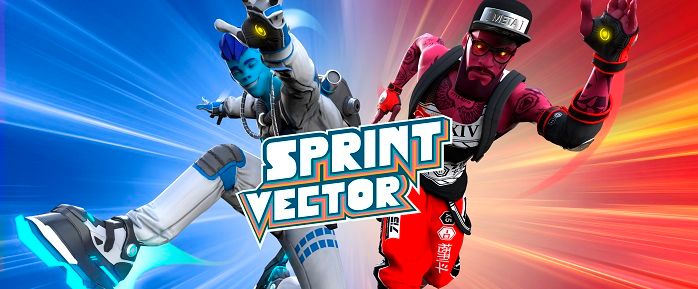VR can create detailed, engrossing and believable worlds. Over the past year, players have been able to be Batman, explore an island filled with dinosaurs and shoot robots. You know what all these VR experiences lack? True locomotion. You’re either relegated to standing in one place the entire time, or swapping between vantage points by tapping a button. There’s no real movement inside VR games and it can sometimes cause nausea where there is. These are all problems Sprint Vector is trying to solve with its fast-pace locomotion system. Question is whether or not it will succeed.
Hardcore Gamer went hands-on with Sprint Vector, and much to our surprise, the game’s locomotion system works as advertised. Developer Survios has managed to develop a locomotion system that not only conveys a sense of speed, but does so without causing any nausea or discomfort.
https://www.anrdoezrs.net/links/3607085/type/dlg/sid/UUhgUeUpU31097/https://www.youtube.com/watch?v=i2EgXu_FrSk
First hopping into Sprint Vector can be confusing. Longtime gamers will find it odd that they can’t control character movement with a joystick. Instead, they’ll be using their arms, head, and body to create movement. The faster and more fluid your arm motions, the more speed you’ll pick up in-game. It’s going to take a few times to get over the jarring change, but Survios may be onto something here.
The demo presented to us was running on an HTC Vive. The motion controllers in each hand represent each arm in-game. To run forward, players will need to hold the trigger and swing their arms back and forth, all while releasing the trigger as their arm falls. The triggers also play an important role in climbing. To jump, players will need to hold the trackpad and throw their arm to the side. Side buttons on the Vive controller are for braking and allowing players to reverse. When in the air, shoot both arms forward to fly like Superman. Finally, head movement will change the trajectory of the character’s movement.
Controls are a lot to swallow, but a handy tutorial and practice run were certainly helpful. Sprint Vector is a very active game that will get your heart pumping. This is a VR game where the bigger your movements are, the faster you go. For the most part, the game was running very well, but there were still some problems, mostly around the control scheme.
https://www.anrdoezrs.net/links/3607085/type/dlg/sid/UUhgUeUpU31097/https://www.youtube.com/watch?v=2AIX-GfoXFs
Too many actions were mapped to similar buttons. Running, jumping, climbing, and even reversing all require some form of input from the triggers. When trying to go fast, it’s too easy to accidentally perform one of these actions instead of the intended one. Worst of all, especially for those who grip their controllers tightly, it’s far too easy to press the Vive controller’s side button, which really halts any momentum players try to get. Much of this criticism comes down to the design of Vive’s controllers. Both the Oculus Rift Touch Controllers and PS VR Move Controllers feature far more buttons to tie different mechanics to. As such, this may not be a problem on those platforms.
What Sprint Vector does right it does very well. The sense of momentum the game creates is something unique and special. The colorful, neon graphics are pleasant to look at and help convey just how fast you’re going. The demo was a vertical slice with few obstacles, deathtraps and limited to two players, but it did its job. Sprint Vector, despite a few early problems, will make VR players believe they can move without getting sick.
Sprint Vector currently does not have a release date, but HTC Vive and Oculus Rift versions are planned. Read our interview with developer Survios here.

